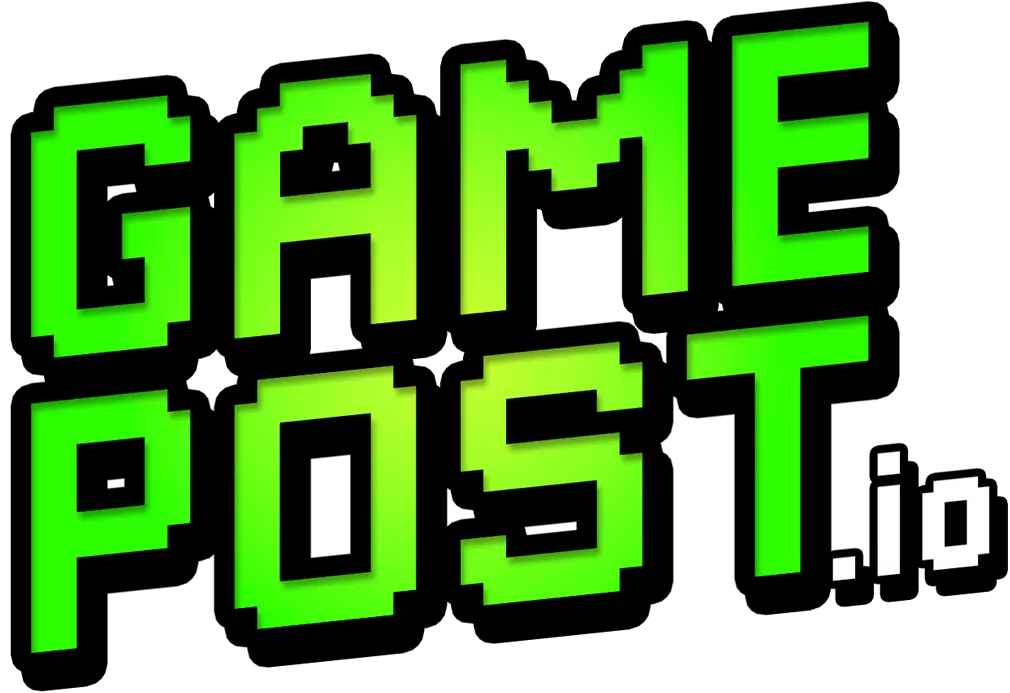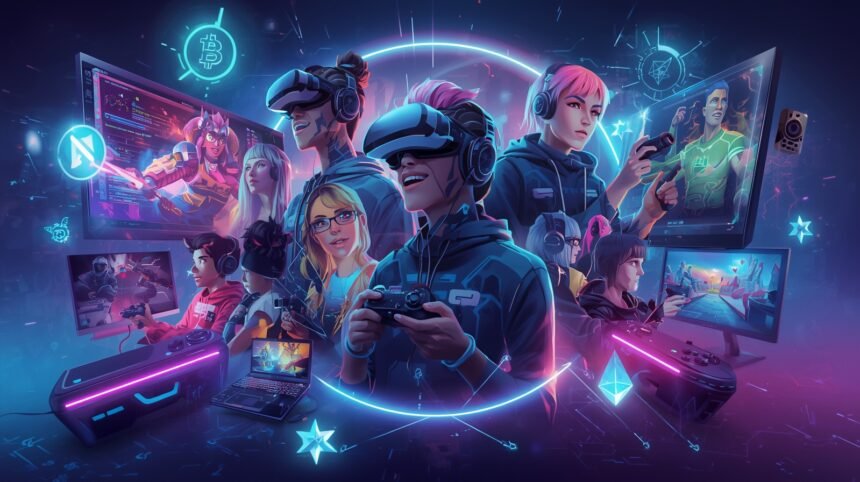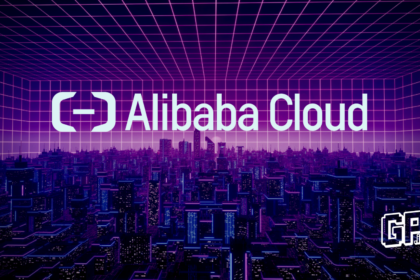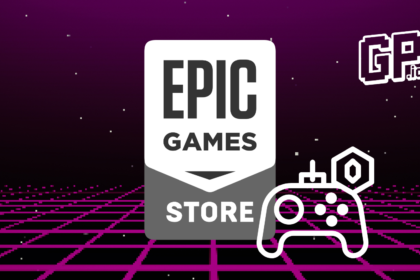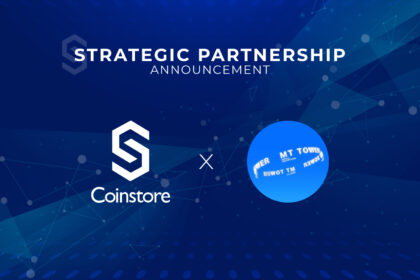Introduction to Web3 Gaming
Web3 gaming represents a transformative shift in the gaming industry, leveraging decentralized technologies to create a more immersive and player-centric experience. Unlike traditional gaming, which typically relies on centralized servers and proprietary control, Web3 gaming harnesses the power of blockchain technology, enabling players to own their digital assets securely. This paradigm shift is rooted in the principles of decentralization and transparency, offering players control over in-game items and currencies through non-fungible tokens (NFTs).
The integration of blockchain into gaming ecosystems allows for the creation of decentralized gaming platforms. These platforms are characterized by their open nature, where developers and players can interact more freely without the constraints imposed by traditional publishers. As players engage in these ecosystems, they can trade, sell, or even create their own assets, thus establishing a true economy within the gaming landscape. The unique properties of blockchain technology ensure that ownership is verifiable, immutable, and truly belongs to the player, enhancing the overall gaming experience.
In addition to asset ownership, NFTs play a crucial role in Web3 gaming. These unique digital tokens enable players to possess in-game characters, skins, and other assets with real-world value. By capitalizing on the intrinsic characteristics of NFTs, developers can foster a more engaging experience that encourages community participation and creativity. Players can participate in social interactions and in-game economies, thus enriching their overall experience and increasing immersion.
As of October 2025, the evolution of Web3 gaming will have reshaped the gaming landscape by catering to emerging trends and user expectations. This incorporation of decentralized mechanics not only enhances player engagement but also democratizes access to the gaming experience, ultimately paving the way for a new era in digital entertainment.
Market Growth and Trends
The Web3 gaming market has witnessed substantial growth as of October 2025, marking a notable shift in the gaming landscape. Recent statistics indicate that the market size has surged to approximately $20 billion, reflecting a compound annual growth rate (CAGR) of over 35% since 2021. This remarkable expansion has significantly boosted the user base, which now encompasses more than 100 million active players worldwide. This growth is largely attributed to the increasing adoption of blockchain technology, which facilitates transparency, ownership, and enhanced gameplay experiences.
Investment levels in the Web3 gaming sector have also soared, with venture capitalists funneling more than $5 billion into various projects in the past year alone. This influx of capital has empowered game developers to innovate further, leading to the emergence of more sophisticated gaming environments. The integration of decentralized finance (DeFi) mechanisms is another trend reshaping the industry, allowing players to earn while playing, and contributing to the popularity of play-to-earn models.
Shifting player engagement strategies are significantly influencing market dynamics. Players are increasingly seeking immersive and interconnected gaming experiences, prompting the demand for cross-platform interoperability. This trend has encouraged several leading projects to build ecosystems where users can seamlessly transition between games, retaining their assets and experiences. Projects such as Axie Infinity and Decentraland have set benchmarks by enhancing user engagement through immersive graphics and interactive gameplay.
Furthermore, tokenization and non-fungible tokens (NFTs) have become central to the gaming experience, providing players with genuine ownership of in-game assets. This approach has not only enhanced the value of gaming but has also created new revenue streams for developers. The blend of innovative gameplay mechanics coupled with blockchain technology is setting the stage for sustained growth and transformation in the Web3 gaming market, establishing a solid foundation for its future evolution.
Challenges Facing Web3 Gaming
The Web3 gaming market, while burgeoning with potential as of October 2025, faces significant challenges that could impact its growth and sustainability. One of the most prominent issues is scalability. Many blockchain networks struggle to accommodate large numbers of concurrent users, leading to transaction delays and increased fees. These limitations can deter gamers who expect seamless experiences in fast-paced environments. Addressing scalability is essential to support the rapid growth of player bases in Web3 gaming.
Security vulnerabilities present another critical challenge. The decentralized nature of blockchain technology does not guarantee immunity from hacks and exploits. Instances of breaches in smart contracts and user wallets have led to substantial financial losses and shaken the confidence of potential players. Developers must prioritize security to foster trust and promote user adoption in the Web3 gaming realm.
Moreover, regulatory compliance has become a pressing concern. The emergence of decentralized platforms has outpaced existing regulatory frameworks in many jurisdictions. Without clear guidelines, developers may encounter legal issues that could hinder their operations or lead to penalties. Engaging with regulators and establishing compliant operational practices are crucial for the longevity of Web3 gaming initiatives.
Another hurdle pertains to user onboarding. Introducing traditional gamers to decentralized ecosystems often involves complex procedures, which can deter new users. The unfamiliarity with cryptocurrency and blockchain technology may create barriers for less tech-savvy audiences. Creating user-friendly interfaces, comprehensive tutorials, and streamlined processes is essential to enhance accessibility and appeal.
Lastly, gamer sentiments towards Web3 technologies play a pivotal role in shaping the market landscape. While some players are enthusiastic about digital ownership and play-to-earn models, others remain skeptical, questioning the practicality and sustainability of these innovative concepts. This dichotomy highlights the need for the market to address concerns while communicating the tangible benefits of Web3 gaming. Together, these challenges outline a multifaceted landscape that requires strategic solutions for the future of the industry.
Future Outlook and Predictions
The Web3 gaming ecosystem is at the cusp of transformative advancements that promise to redefine user experiences and market dynamics. As technology continues to evolve, integration of artificial intelligence and blockchain will likely enhance gameplay by introducing more personalized and immersive experiences. The advent of immersive technologies, including augmented reality (AR) and virtual reality (VR), will redefine how players engage with virtual environments, leading to a more seamless blend between the digital and physical worlds. The utilization of decentralized finance (DeFi) principles within gaming is predicted to inspire innovative economic models, allowing players to engage in decentralized marketplaces where they can trade in-game assets reliably.
Market trends suggest that the Web3 gaming industry will experience robust growth over the next few years. Analysts anticipate that user adoption will surge as more gamers become familiar with blockchain technology. This trend is expected to generate a diverse range of game genres leveraging DeFi, play-to-earn, and non-fungible tokens (NFTs). These genres will not only cater to traditional gamers but will also attract a new audience seeking unique experiences that reward participation.
Emerging game genres such as blockchain-based simulation games and social games with expansive ecosystems are likely to gain traction. Furthermore, the evolution of cross-platform gaming is poised to enhance connectivity and player engagement, enabling users to interact seamlessly across different ecosystems. Developers, investors, and gamers must stay informed and adaptable, as the next few years will witness rapid shifts in technology and consumer preferences. This adaptability will be essential for capitalizing on opportunities and navigating potential challenges within the evolving landscape of Web3 gaming.
